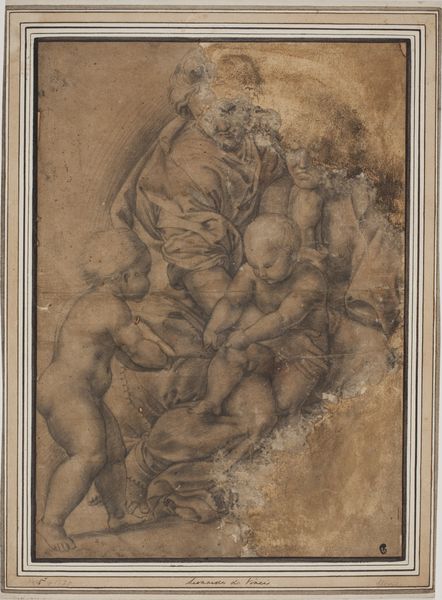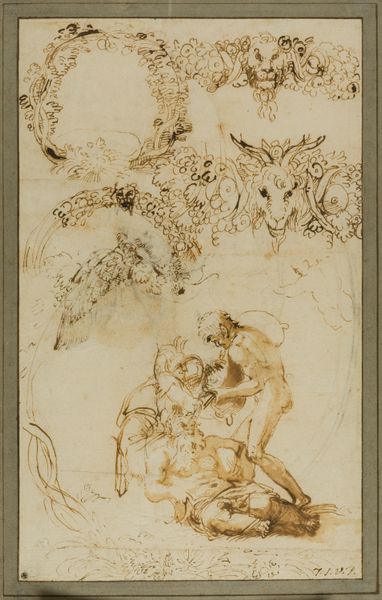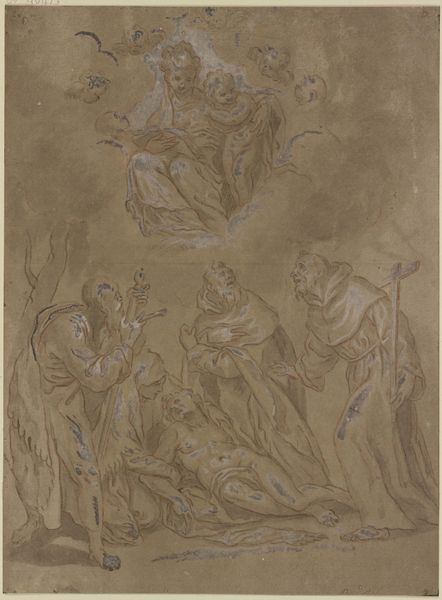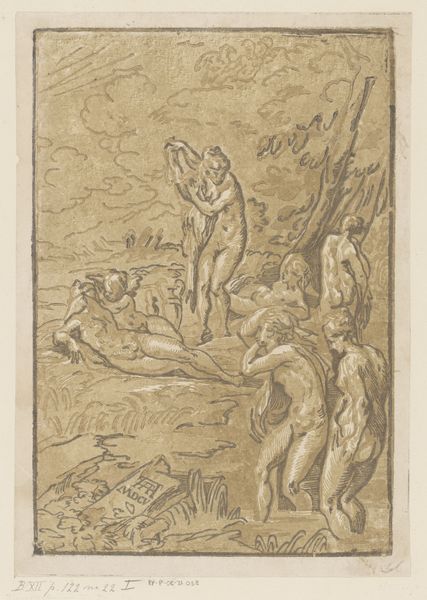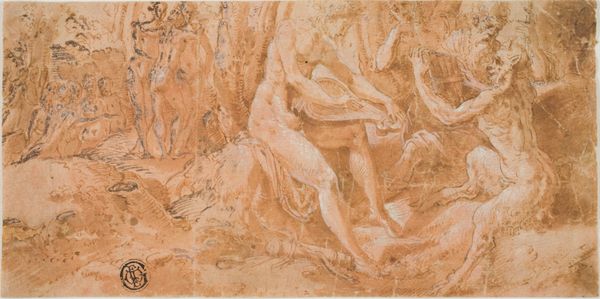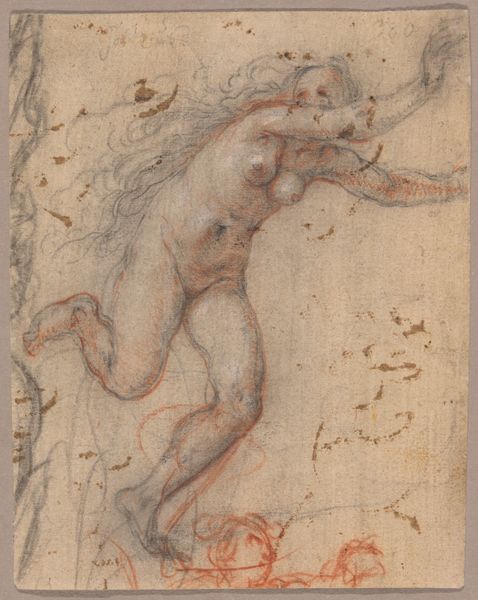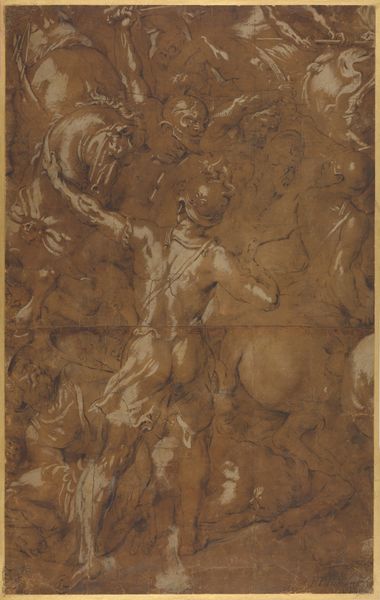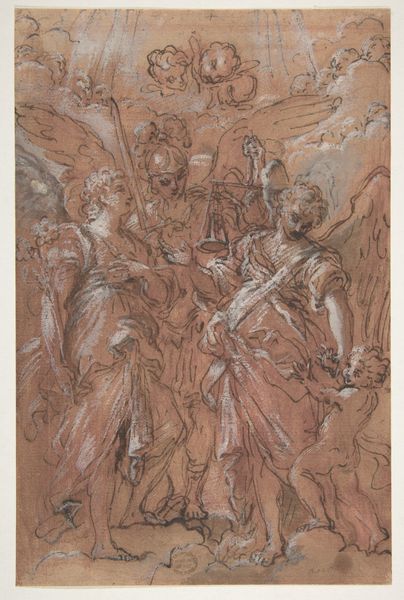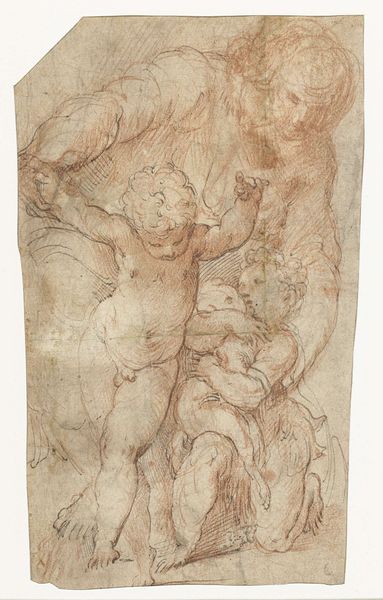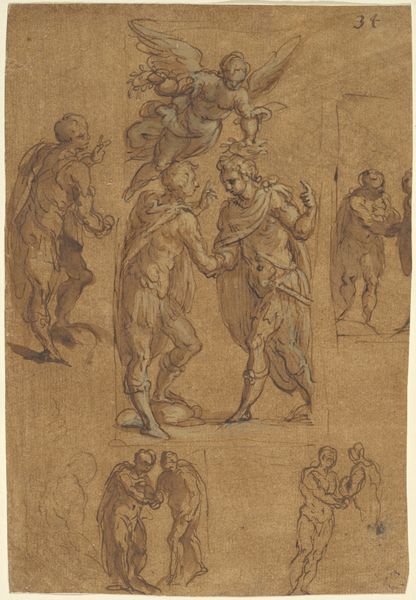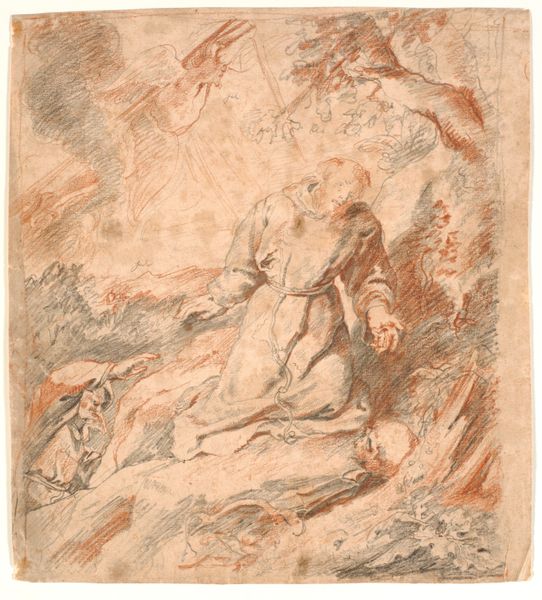
Allegory with an equestrian monument, Minerva and Neptune 1654 - 1714
0:00
0:00
drawing
#
drawing
#
allegory
#
baroque
#
landscape
#
figuration
#
history-painting
#
academic-art
Dimensions: 535 mm (height) x 422 mm (width) (bladmaal)
Curator: Giuseppe Passeri, sometime between 1654 and 1714, gave us this dynamic drawing entitled "Allegory with an equestrian monument, Minerva and Neptune", which resides here at the SMK. What’s your initial reaction? Editor: My first thought is the sheer drama of it. The warm, reddish-brown hues give it an urgent feel. It seems a potent mix of mythology and movement frozen on paper. Curator: Passeri’s world here, like many Baroque allegories, blends the historical with the symbolic. Minerva, the goddess of wisdom and strategic warfare, and Neptune, god of the sea, are not just decorative; they represent concepts deeply interwoven with power and perhaps even political propaganda. The question is: for whom? Editor: Yes, who commissioned this piece? And what specific narrative are they hoping to propagate? It’s a historical document designed to advocate for the values, agenda, and authority of a particular group, right? Curator: Absolutely. It's a conversation about legitimacy and dominance, articulated through carefully chosen iconography. What interests me most, however, is how Passeri is situating his own historical and artistic moment within this conversation, by interpreting and adopting classical models. He isn't simply reproducing a pre-existing ideology, he's participating in a contemporary discourse. Editor: And those powerful figures! Minerva commanding her horse, exuding intelligence and control and the virility of Neptune hauling his trident as a force of nature... The image plays on very gendered notions of power, as well, which of course, says much about the art world and larger social structures in this period. Curator: It seems we both converge on this interpretation of the image—a manifestation of constructed power through artistic form, even though our individual methodologies and conclusions differ in specific details. Editor: It strikes me again just how charged even preparatory sketches like this can be. They’re not neutral observations but active sites of meaning-making. Curator: A potent example, indeed, for revealing layers of historical, cultural, and sociopolitical intent within even a single drawing.
Comments
No comments
Be the first to comment and join the conversation on the ultimate creative platform.
